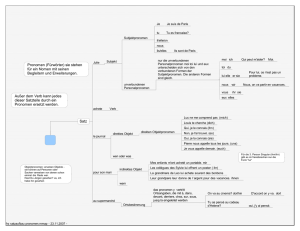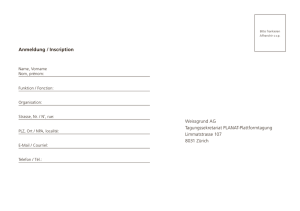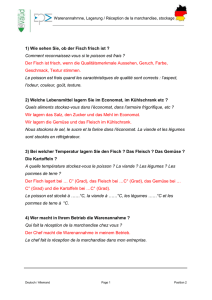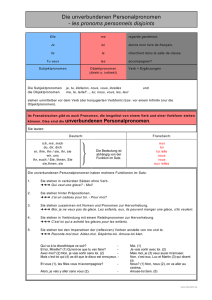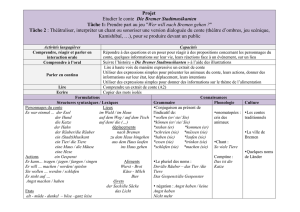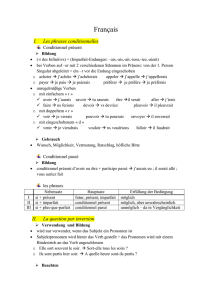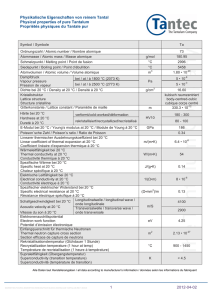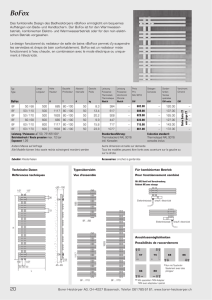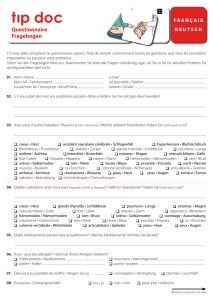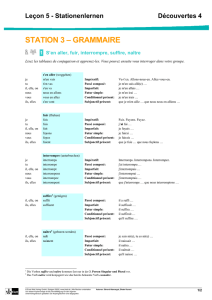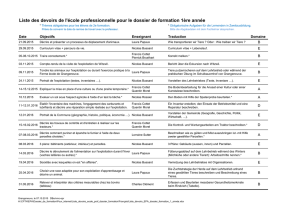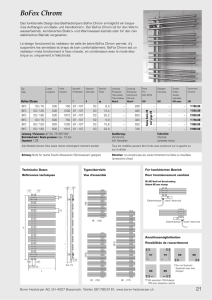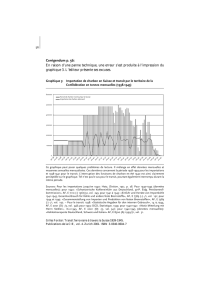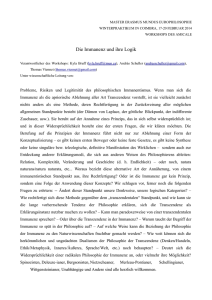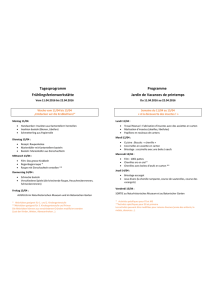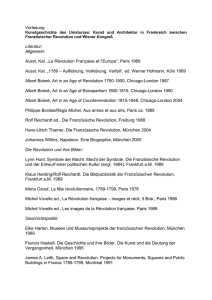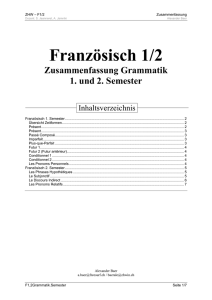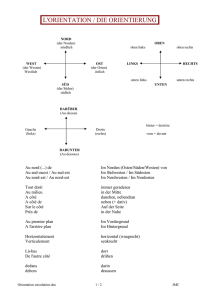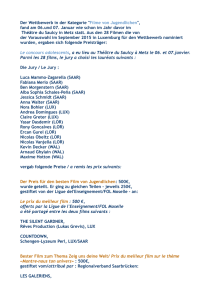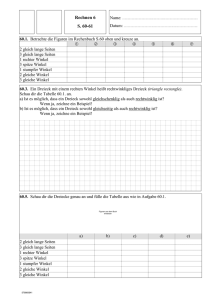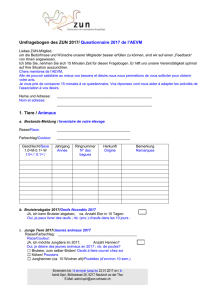Apernyl mit Acetylsalicylsäure
Werbung
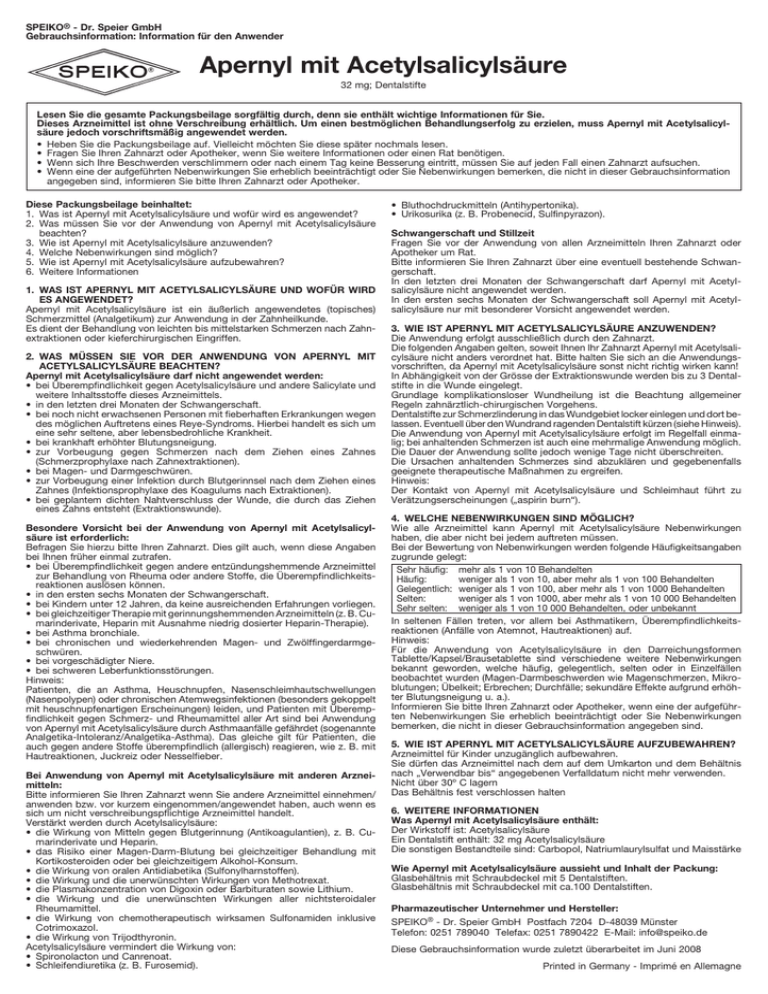
SPEIKO® - Dr. Speier GmbH Gebrauchsinformation: Information für den Anwender Apernyl mit Acetylsalicylsäure 32 mg; Dentalstifte Lesen Sie die gesamte Packungsbeilage sorgfältig durch, denn sie enthält wichtige Informationen für Sie. Dieses Arzneimittel ist ohne Verschreibung erhältlich. Um einen bestmöglichen Behandlungserfolg zu erzielen, muss Apernyl mit Acetylsalicylsäure jedoch vorschriftsmäßig angewendet werden. • Heben Sie die Packungsbeilage auf. Vielleicht möchten Sie diese später nochmals lesen. • Fragen Sie Ihren Zahnarzt oder Apotheker, wenn Sie weitere Informationen oder einen Rat benötigen. • Wenn sich Ihre Beschwerden verschlimmern oder nach einem Tag keine Besserung eintritt, müssen Sie auf jeden Fall einen Zahnarzt aufsuchen. • Wenn eine der aufgeführten Nebenwirkungen Sie erheblich beeinträchtigt oder Sie Nebenwirkungen bemerken, die nicht in dieser Gebrauchsinformation angegeben sind, informieren Sie bitte Ihren Zahnarzt oder Apotheker. Diese Packungsbeilage beinhaltet: 1. Was ist Apernyl mit Acetylsalicylsäure und wofür wird es angewendet? 2. Was müssen Sie vor der Anwendung von Apernyl mit Acetylsalicylsäure beachten? 3. Wie ist Apernyl mit Acetylsalicylsäure anzuwenden? 4. Welche Nebenwirkungen sind möglich? 5. Wie ist Apernyl mit Acetylsalicylsäure aufzubewahren? 6. Weitere Informationen 1. WAS IST APERNYL MIT ACETYLSALICYLSÄURE UND WOFÜR WIRD ES ANGEWENDET? Apernyl mit Acetylsalicylsäure ist ein äußerlich angewendetes (topisches) Schmerzmittel (Analgetikum) zur Anwendung in der Zahnheilkunde. Es dient der Behandlung von leichten bis mittelstarken Schmerzen nach Zahnextraktionen oder kieferchirurgischen Eingriffen. 2. WAS MÜSSEN SIE VOR DER ANWENDUNG VON APERNYL MIT ACETYLSALICYLSÄURE BEACHTEN? Apernyl mit Acetylsalicylsäure darf nicht angewendet werden: • bei Überempfindlichkeit gegen Acetylsalicylsäure und andere Salicylate und weitere Inhaltsstoffe dieses Arzneimittels. • in den letzten drei Monaten der Schwangerschaft. • bei noch nicht erwachsenen Personen mit fieberhaften Erkrankungen wegen des möglichen Auftretens eines Reye-Syndroms. Hierbei handelt es sich um eine sehr seltene, aber lebensbedrohliche Krankheit. • bei krankhaft erhöhter Blutungsneigung. • zur Vorbeugung gegen Schmerzen nach dem Ziehen eines Zahnes (Schmerzprophylaxe nach Zahnextraktionen). • bei Magen- und Darmgeschwüren. • zur Vorbeugung einer Infektion durch Blutgerinnsel nach dem Ziehen eines Zahnes (Infektionsprophylaxe des Koagulums nach Extraktionen). • bei geplantem dichten Nahtverschluss der Wunde, die durch das Ziehen eines Zahns entsteht (Extraktionswunde). Besondere Vorsicht bei der Anwendung von Apernyl mit Acetylsalicylsäure ist erforderlich: Befragen Sie hierzu bitte Ihren Zahnarzt. Dies gilt auch, wenn diese Angaben bei Ihnen früher einmal zutrafen. • bei Überempfindlichkeit gegen andere entzündungshemmende Arzneimittel zur Behandlung von Rheuma oder andere Stoffe, die Überempfindlichkeitsreaktionen auslösen können. • in den ersten sechs Monaten der Schwangerschaft. • bei Kindern unter 12 Jahren, da keine ausreichenden Erfahrungen vorliegen. • bei gleichzeitiger Therapie mit gerinnungshemmenden Arzneimitteln (z. B. Cumarinderivate, Heparin mit Ausnahme niedrig dosierter Heparin-Therapie). • bei Asthma bronchiale. • bei chronischen und wiederkehrenden Magen- und Zwölffingerdarmgeschwüren. • bei vorgeschädigter Niere. • bei schweren Leberfunktionsstörungen. Hinweis: Patienten, die an Asthma, Heuschnupfen, Nasenschleimhautschwellungen (Nasenpolypen) oder chronischen Atemwegsinfektionen (besonders gekoppelt mit heuschnupfenartigen Erscheinungen) leiden, und Patienten mit Überempfindlichkeit gegen Schmerz- und Rheumamittel aller Art sind bei Anwendung von Apernyl mit Acetylsalicylsäure durch Asthmaanfälle gefährdet (sogenannte Analgetika-Intoleranz/Analgetika-Asthma). Das gleiche gilt für Patienten, die auch gegen andere Stoffe überempfindlich (allergisch) reagieren, wie z. B. mit Hautreaktionen, Juckreiz oder Nesselfieber. Bei Anwendung von Apernyl mit Acetylsalicylsäure mit anderen Arzneimitteln: Bitte informieren Sie Ihren Zahnarzt wenn Sie andere Arzneimittel einnehmen/ anwenden bzw. vor kurzem eingenommen/angewendet haben, auch wenn es sich um nicht verschreibungspflichtige Arzneimittel handelt. Verstärkt werden durch Acetylsalicylsäure: • die Wirkung von Mitteln gegen Blutgerinnung (Antikoagulantien), z. B. Cumarinderivate und Heparin. • das Risiko einer Magen-Darm-Blutung bei gleichzeitiger Behandlung mit Kortikosteroiden oder bei gleichzeitigem Alkohol-Konsum. • die Wirkung von oralen Antidiabetika (Sulfonylharnstoffen). • die Wirkung und die unerwünschten Wirkungen von Methotrexat. • die Plasmakonzentration von Digoxin oder Barbituraten sowie Lithium. • die Wirkung und die unerwünschten Wirkungen aller nichtsteroidaler Rheumamittel. • die Wirkung von chemotherapeutisch wirksamen Sulfonamiden inklusive Cotrimoxazol. • die Wirkung von Trijodthyronin. Acetylsalicylsäure vermindert die Wirkung von: • Spironolacton und Canrenoat. • Schleifendiuretika (z. B. Furosemid). • Bluthochdruckmitteln (Antihypertonika). • Urikosurika (z. B. Probenecid, Sulfinpyrazon). Schwangerschaft und Stillzeit Fragen Sie vor der Anwendung von allen Arzneimitteln Ihren Zahnarzt oder Apotheker um Rat. Bitte informieren Sie Ihren Zahnarzt über eine eventuell bestehende Schwangerschaft. In den letzten drei Monaten der Schwangerschaft darf Apernyl mit Acetylsalicylsäure nicht angewendet werden. In den ersten sechs Monaten der Schwangerschaft soll Apernyl mit Acetylsalicylsäure nur mit besonderer Vorsicht angewendet werden. 3. WIE IST APERNYL MIT ACETYLSALICYLSÄURE ANZUWENDEN? Die Anwendung erfolgt ausschließlich durch den Zahnarzt. Die folgenden Angaben gelten, soweit Ihnen Ihr Zahnarzt Apernyl mit Acetylsalicylsäure nicht anders verordnet hat. Bitte halten Sie sich an die Anwendungsvorschriften, da Apernyl mit Acetylsalicylsäure sonst nicht richtig wirken kann! In Abhängigkeit von der Grösse der Extraktionswunde werden bis zu 3 Dentalstifte in die Wunde eingelegt. Grundlage komplikationsloser Wundheilung ist die Beachtung allgemeiner Regeln zahnärztlich-chirurgischen Vorgehens. Dentalstifte zur Schmerzlinderung in das Wundgebiet locker einlegen und dort belassen. Eventuell über den Wundrand ragenden Dentalstift kürzen (siehe Hinweis). Die Anwendung von Apernyl mit Acetylsalicylsäure erfolgt im Regelfall einmalig; bei anhaltenden Schmerzen ist auch eine mehrmalige Anwendung möglich. Die Dauer der Anwendung sollte jedoch wenige Tage nicht überschreiten. Die Ursachen anhaltenden Schmerzes sind abzuklären und gegebenenfalls geeignete therapeutische Maßnahmen zu ergreifen. Hinweis: Der Kontakt von Apernyl mit Acetylsalicylsäure und Schleimhaut führt zu Verätzungserscheinungen („aspirin burn“). 4. WELCHE NEBENWIRKUNGEN SIND MÖGLICH? Wie alle Arzneimittel kann Apernyl mit Acetylsalicylsäure Nebenwirkungen haben, die aber nicht bei jedem auftreten müssen. Bei der Bewertung von Nebenwirkungen werden folgende Häufigkeitsangaben zugrunde gelegt: Sehr häufig: mehr als 1 von 10 Behandelten Häufig: weniger als 1 von 10, aber mehr als 1 von 100 Behandelten Gelegentlich: weniger als 1 von 100, aber mehr als 1 von 1000 Behandelten Selten: weniger als 1 von 1000, aber mehr als 1 von 10 000 Behandelten Sehr selten: weniger als 1 von 10 000 Behandelten, oder unbekannt In seltenen Fällen treten, vor allem bei Asthmatikern, Überempfindlichkeitsreaktionen (Anfälle von Atemnot, Hautreaktionen) auf. Hinweis: Für die Anwendung von Acetylsalicylsäure in den Darreichungsformen Tablette/Kapsel/Brausetablette sind verschiedene weitere Nebenwirkungen bekannt geworden, welche häufig, gelegentlich, selten oder in Einzelfällen beobachtet wurden (Magen-Darmbeschwerden wie Magenschmerzen, Mikroblutungen; Übelkeit; Erbrechen; Durchfälle; sekundäre Effekte aufgrund erhöhter Blutungsneigung u. a.). Informieren Sie bitte Ihren Zahnarzt oder Apotheker, wenn eine der aufgeführten Nebenwirkungen Sie erheblich beeinträchtigt oder Sie Nebenwirkungen bemerken, die nicht in dieser Gebrauchsinformation angegeben sind. 5. WIE IST APERNYL MIT ACETYLSALICYLSÄURE AUFZUBEWAHREN? Arzneimittel für Kinder unzugänglich aufbewahren. Sie dürfen das Arzneimittel nach dem auf dem Umkarton und dem Behältnis nach „Verwendbar bis“ angegebenen Verfalldatum nicht mehr verwenden. Nicht über 30º C lagern Das Behältnis fest verschlossen halten 6. WEITERE INFORMATIONEN Was Apernyl mit Acetylsalicylsäure enthält: Der Wirkstoff ist: Acetylsalicylsäure Ein Dentalstift enthält: 32 mg Acetylsalicylsäure Die sonstigen Bestandteile sind: Carbopol, Natriumlaurylsulfat und Maisstärke Wie Apernyl mit Acetylsalicylsäure aussieht und Inhalt der Packung: Glasbehältnis mit Schraubdeckel mit 5 Dentalstiften. Glasbehältnis mit Schraubdeckel mit ca.100 Dentalstiften. Pharmazeutischer Unternehmer und Hersteller: SPEIKO® - Dr. Speier GmbH Postfach 7204 D-48039 Münster Telefon: 0251 789040 Telefax: 0251 7890422 E-Mail: [email protected] Diese Gebrauchsinformation wurde zuletzt überarbeitet im Juni 2008 Printed in Germany - Imprimé en Allemagne Acetylsalicylic acid reduces the efficacy of • spironolactone and canrenoate • loop diuretics (e.g. furosemide) • drugs against high blood pressure (anti-hypertension drugs) • uricosuric drugs (e.g. probenecid, sulphinpyrazone) Taking/Using other medicines Please tell your dentist or pharmacist if you are taking of have recently taken any other medicines, including medicines obtained without a prescription. Acetylsalicylic acid potentiates • the effects of agents against blood clots (anticoagulants), for example, cumarin derivatives and heparin • the risk of gastric-intestinal bleeding under simultaneous treatment with corticosteroids or in case of concomitant consumption of alcohol • the effects of oral antidiabetic agents (sulphonyl carbamides) • the efficacy and adverse effects of methotrexate • the concentration of digoxin or barbiturates and lithium in the blood plasma • the efficacy and adverse effects of all non-steroidal anti-rheumatic agents • the desired and adverse effects of chemotherapeutically effective sulphonamides, including cotrimoxazole • the effect of tri-iodothyronine Note: Patients suffering from asthma, hay fever, swelling of the nasal mucous membrane (nasal polyps), or chronic infections of the respiratory tract (in particular, in combination with symptoms resembling those of hay fever), and patients with hypersensitivity to all kinds of pain relievers and antirheumatic agents are at risk for asthmatic seizure when using Apernyl with acetylsalicylic acid (so-called analgesic intolerance/analgesic asthma). The same applies to patients who are hypersensitive (allergic) to other substances, e.g. by responding with skin reactions, pruritus, or urticaria. Take special care with Apernyl with acetylsalicylic acid: Please ask your dentist in this respect. This is valid even when these conditions applied to you in the past. • in cases of hypersensitivity to other anti-inflammatory drugs for treatment of rheumatism or to other substances causing hypersensitivity reactions • in the first six months of pregnancy • in children under 12 years of age because of lacking experience • in case of a concomitant therapy with anticoagulant drugs (e.g. cumarin derivatives, heparin, with the exception of a low-dose heparin treatment) • in cases of bronchial asthma • in cases of chronic and recurrent gastric or duodenal ulcers • in cases of impaired kidney function • in cases of severe liver dysfunction 2. BEFORE YOU USE APERNYL WITH ACETYLSALICYLIC ACID Do not use Apernyl with acetylsalicylic acid: • if you are allergic (hypersensitive) to acetylsalicylic acid or other salicylates or any of the other ingredients of this medicinal product. • in the last three months of pregnancy. • in adults with feverish diseases because of a potential risk of the occurrence of Reye’s syndrome. This is a very rare but life-threatening condition. • in case of abnormally increased bleeding tendency. • to prevent pain after tooth extractions (pulling a tooth). • in case of gastric or intestinal ulcers. • to prevent infection of the coagulum after extractions (prevent infection by blood clot after pulling a tooth). • in case of an intended tight suture closure of the extraction wound (wound, which results from pulling a tooth). 1. WHAT APERNYL WITH ACETYLSALICYLIC ACID IS AND WHAT IT IS USED FOR Apernyl with acetylsalicylic acid is a pain-relieving drug ( analgesic ) for external (topical) use in dentistry. It is used for the treatment of mild to moderate pain after tooth extraction or orthodontic surgery. at least 1 in 10 persons at least 1 in 100 persons at least 1 in 1000 persons at least 1 in 10.000 persons less than 1 in 10.000 persons, or not known Printed in Germany - Imprimé en Allemagne This package leaflet was last approved in June 2008 SPEIKO® - Dr. Speier GmbH P.O.Box 7204 D-48039 Münster telephone: ++49 251 789040 fax: ++49 251 7890422 e-Mail: [email protected] Marketing Authorization Holder and Manufacturer: What Apernyl with acetylsalicylic acid looks like and contents of the pack Glass container with a screw cap with 5 dental sticks. Glass container with a screw cap with approx. 100 dental sticks. 6. FURTHER INFORMATION What Apernyl with acetylsalicylic acid contains: The active substance is acetylsalicylic acid. One dental stick contains 32 mg acetylsalicylic acid. The other ingredients are Carbopol, sodium lauryl sulphate, maize starch. 5. HOW TO STORE APERNYL WITH ACETYLSALICYLIC ACID Keep out of the reach and sight of children. Do not use this medicine after the expiry date which is stated on the outer carton and the container after “Verwendbar bis:”. Do not store above 30° C Keep the container tightly closed. Hypersensitivity reactions (seizures of respiratory distress, skin reactions) occur on seldom occasions, particularly in asthma patients. Note: Upon administration of acetylsalicylic acid in the dosage forms of tablets/ capsules/effervescent tablets various other side-effects have been reported, which have been observed to occur frequently, occasionally, seldom, or in individual cases (stomach and intestinal complaints such as gastric pains, micro-bleedings, nausea, vomiting, diarrhoea, secondary effects due to increased bleeding tendency etc.). If any of the side effects gets serious, or if you notice any side effects not listed in this leaflet, please tell your dentist or pharmacist. Very common Common Uncommon Rare very rare 4. POSSIBLE SIDE EFFECTS Like all medicines, Apernyl with acetylsalicylic acid can cause side effects, although not everybody gets them. The rating of the commonness of side effects are based on the following frequencies: 3. HOW TO USE APERNYL WITH ACETYLSALICYLIC ACID This medicinal product is exclusively administered by the treating dentist. The following indications apply unless Apernyl with acetylsalicylic acid has been otherwise prescribed by your dentist. Please adher to the dosage instructions because otherwise Apernyl with acetylsalicylic acid cannot act properly! Depending on the size of the extraction wound up to 3 dental sticks may be inserted into the wound. Observance of the general rules of dental surgical procedure is the basis for complication free wound healing. For pain relief insert the dental stick(s) loosely into the wound area and leave them there. If necessary, shorten the dental stick if it exceeds beyond the wound margin (see Note). Apernyl with acetylsalicylic acid is normally applied once. Repeated applications are possible if the patient reappears with complaints of persistent pain. However, the duration of application should not exceed a few days. The cause of persisting pain must be clarified, and appropriate therapeutic measures must be taken as necessary. Note: Contact of Apernyl with acetylsalicylic acid with mucous membranes produces symptoms of etching („aspirin burn“). Pregnancy and breast-feeding Ask your dentist or pharmacist for advice before taking/using any medicine. Please tell your dentist if you are pregnant. Apernyl with acetylsalicylic acid must not be used in the last three months of pregnancy. In the first six months of pregnancy, Apernyl with acetylsalicylic acid should only be used with particular caution. Grossesse et allaitement Demandez conseil à votre dentiste ou à votre pharmacien avant de prendre tout médicament. Utilisation d‘autres médicaments Si vous prenez ou avez pris récemment un autre médicament, y compris un médicament obtenu sans ordonnance, parlez-en à votre dentiste ou à votre pharmacien. L‘acide acétylsalicylique augmente : - l‘effet des anticoagulants comme p. ex. des dérivés de la coumarine et de l‘héparine. - le risque d‘hémorragie gastro-intestinale en cas d’association avec des corticostéroïdes ou en cas de consommation simultanée d‘alcool. - l‘effet des antidiabétiques oraux (sulfonylurées). - l‘effet positif et les effets indésirables du Methotrexate. - la concentration plasmatique de Digoxine ou de barbituriques ainsi que du lithium. - l‘effet positif et les effets indésirables de tous les antirhumatismaux non stéroïdes. - l‘effet des sulfonamides chimiothérapeutiques, y compris le Cotrimoxazol. - l‘effet de la triiodothyronine. L‘acide acétylsalicylique diminue les effets : - de la spironolactone et du Canrenoate. - des diurétiques de l‘anse (p. ex. Furosémide). - des antihypertoniques. - des uricosuriques (p. ex. Probénécide, Sulfinpyrazone). Faites attention avec Apernyl à l‘acide acétylsalicylique A cet effet, veuillez consulter votre dentiste. Ceci est également valable si ces informations vous ont concerné à un moment quelconque dans le passé. - en cas d‘hypersensibilité aux anti-inflammatoires/antirhumatismaux ou d‘autres substances déclenchant des réactions d’hypersensibilité (allergies). - au cours des six premiers mois de la grossesse. - chez les enfants de moins de 12 ans, par manque d’expérience suffisante. - en cas d’un traitement simultané avec des médicaments inhibant la coagulation (p. ex. dérivés de la coumarine, héparine, à l‘exception d’un traitement à l’héparine faiblement dosé). - en cas d‘asthme (Asthme bronchique). - en cas d‘ulcères gastriques et d‘ulcères duodénaux chroniques et répétitifs. - en cas d‘antécédents rénaux. - en cas de graves dysfonctionnements hépatiques. Remarque: L‘utilisation d‘Apernyl à l‘acide acétylsalicylique peut provoquer des crises d‘asthme chez les patients souffrant d‘asthme, de rhume des foins, d’inflammation des muqueuses nasales (polypes nasaux) ou d‘infections des voies respiratoires chroniques (surtout associées à des symptômes de type rhume des foins) et chez les patients présentant une hypersensibilité aux analgésiques et aux antirhumatismaux de tout type (ce que l‘on appelle de l‘asthme d‘intolérance aux analgésiques/asthme analgésique). Les patients hypersensibles (allergiques) à d‘autres substances se manifestant p. ex. par des réactions cutanées, des démangeaisons ou par de l‘urticaire sont également concernés par cet avertissement. 2. QUELLES SONT LES INFORMATIONS A CONNAITRE AVANT D‘UTILISER APERNYL A L‘ACIDE ACETYLSALICYLIQUE? N’utilisez jamais Apernyl à l‘acide acétylsalicylique - si vous êtes allergique (hypersensible) à la substance active (acide acétylsalicylique), à d‘autres salicylates ou à l’un des autres composants contenus dans Apernyl à l‘acide acétylsalicylique. - au cours des trois derniers mois de la grossesse. - chez les enfants et les adolescents souffrant de maladies fébriles, du fait de l‘apparition possible d‘un syndrome de Reye. Il s‘agit là d‘une maladie pédiatrique extrêmement rare mais mortelle. - en cas d‘une diathèse hémorragique maladive accrue. - pour la prophylaxie de la douleur suite à des extractions dentaires. - en cas d‘ulcères de l‘estomac et de l‘intestin. - pour la prophylaxie des infections du coagulum suite à des extractions dentaires. - si une dense occlusion suturée de la plaie d‘extraction est prévue. 1. QU‘EST-CE QUE APERNYL A L‘ACIDE ACETYLSALICYLIQUE ET DANS QUEL CAS EST-IL UTILISE? Apernyl à l‘acide acétylsalicylique est un médicament antidouleur (analgésique) à usage externe (topique) utilisé en odontologie. Ce médicament est utilisé pour le traitement des douleurs allant de légères à moyennes à la suite d‘extractions dentaires ou d‘interventions chirurgicales maxillaires. Dans cette notice: 1. Qu‘est-ce que Apernyl à l‘acide acétylsalicylique et dans quel cas est-il utilisé? 2. Quelles sont les informations à connaître avant d‘utiliser Apernyl à l‘acide acétylsalicylique ? 3. Comment utiliser Apernyl à l‘acide acétylsalicylique ? 4. Quels sont les effets indésirables éventuels ? 5. Comment conserver Apernyl à l‘acide acétylsalicylique ? 6. Informations supplémentaires plus d’un patient sur 10 moins d’un patient sur 10, mais plus d’un patient sur 100 moins d’un patient sur 100, mais plus d’un patient sur 1000 moins d’un patient sur 1000, mais plus d’un patient sur 10 000 moins d’un patient sur 10 000, ou inconnu Imprimé en Allemagne - Printed in Germany La dernière date à laquelle cette notice a été approuvée est juin 2008 SPEIKO® - Dr. Speier GmbH BP 7204 D-48039 Münster Téléphone: ++49 251 789040 Fax: ++49 251 7890422 E-Mail: [email protected] Titulaire de l’Autorisation de mise sur le marché et fabricant: 6. INFORMATIONS SUPPLEMENTAIRES Que contient Apernyl à l‘acide acétylsalicylique ? La substance active est l’ acide acétylsalicylique. 32 mg l’ acide acétylsalicylique par batôn dentaire. Les autres composants sont le carbopol, le lauryl sulfate de sodium et l’amidon de maïs. Qu’est ce que Apernyl à l‘acide acétylsalicylique et contenu de l’emballage extérieur ? Récipient en verre avec couvercle à vis contenant environ 100 batôns dentaires. Récipient en verre avec couvercle à vis contenant environ 5 batôns dentaires. 5. COMMENT CONSERVER APERNYL A L‘ACIDE ACETYLSALICYLIQUE? Tenir hors de la portée et de la vue des enfants. Ne pas utiliser Apernyl à l‘acide acétylsalicylique après la date de péremption mentionnée sur le récipient et sur la boîte en carton après „Verwendbar bis :“. Ne pas stocker à une température plus de 30 °C. Maintenir le récipient hermétiquement fermé. Dans des cas rares, on note l’apparition - surtout chez les personnes souffrant d‘asthme - de réactions d‘hypersensibilité (crises de détresse respiratoire, réactions cutanées). Remarque: Lors de l’administration de l‘acide acétylsalicylique sous forme de comprimé/capsule/comprimé effervescent, différents effets secondaires ont été constatés, ceuxci ayant été observés fréquemment, de temps en temps, rarement ou dans des cas isolés (troubles gastro-intestinaux comme douleurs gastriques; microhémorragies; nausées; vomissements; diarrhées, effets secondaires dus à une tendance hémorrhagique; etc.). Si vous ressentez un des effets mentionnés comme graves ou si vous présentez des effets indésirables non mentionnés dans cette notice, veuillez en informer votre dentiste ou votre pharmacien. Très fréquent: Fréquent: Occasionnel: Rare: Très rare: 4. QUELS SONT LES EFFETS INDESIRABLES EVENTUELS? Comme tous les médicaments, Apernyl à l‘acide acétylsalicylique peut provoquer des effets indésirables, mais ils ne surviennent pas systématiquement chez tout le monde. L’évaluation de la fréquence des effets secondaires est basée sur le tableau suivant: 3. COMMENT UTILISER APERNYL A L‘ACIDE ACETYLSALICYLIQUE? Apernyl à l‘acide acétylsalicylique doit être appliqué exclusivement par un dentiste. Les informations suivantes sont valables sauf prescription contraire de votre dentiste concernant l’Apernyl à l‘acide acétylsalicylique. Veuillez observer strictement les prescriptions d‘emploi sinon l‘Apernyl à l‘acide acétylsalicylique risque de ne pas agir correctement ! En fonction de la taille de la plaie causée par l‘extraction, jusqu‘à 3 batôns dentaires sont placés dans la plaie. Pour éviter toute complication lors de la cicatrisation, les règles générales de chirurgie dentaire doivent être strictement observées. Placez le ou les batôn(s) dentaire(s) dans la région de la plaie pour réduire la douleur et maintenez-les à cet endroit. Adaptez la taille du batôn dentaire afin que celui-ci ne dépasse pas de la plaie (cf. remarque). L‘utilisation d‘Apernyl à l‘acide acétylsalicylique est normalement unique; si le patient présente de nouveau de douleurs, l’application peut être renouvelée. Toutefois, la durée de l‘utilisation ne doit pas excéder quelques jours. Il convient de déterminer la cause des douleurs persistantes et de prendre le cas échéant des mesures thérapeutiques appropriées. Remarque: Un contact d‘Apernyl à l‘acide acétylsalicylique avec la muqueuse provoque des brûlures (appelée «aspirin burn»). En cas de suspicion de grossesse, veuillez informer votre dentiste. Au cours des trois derniers mois de grossesse, Apernyl à l‘acide acétylsalicylique ne doit pas être utilisé. Au cours des six premiers mois de grossesse, Apernyl à l‘acide acétylsalicylique ne doit être utilisé qu‘avec la plus grande précaution. 32 mg, Batôn dentaire Veuillez lire attentivement l‘intégralité de cette notice avant d’utiliser ce médicament. Elle contient des informations importantes pour votre traitement. Ce médicament est disponible sans prescription médicale. Pour un traitement optimal il est toutefois important d’utiliser Apernyl conformément aux instructions. - Gardez cette notice, vous pourriez avoir besoin de la relire. - Adressez-vous à votre dentiste ou à votre pharmacien si vous avez besoin de plus d‘informations ou d’un conseil. - Si les symptômes s‘aggravent ou persistent après 1 jour, consultez un dentiste. - Si vous remarquez des effets indésirables non mentionnés dans cette notice, ou si vous ressentez un des effets mentionnés comme étant grave, veuillez en informer votre dentiste ou à votre pharmacien. Read all of this leaflet carefully because it contains important information for you. This medicine is available without prescription. However, you still need to use Apernyl with acetylsalicylic acid carefully to get the best results from it. - Keep this leaflet. You may want to read it again. - Ask your dentist or pharmacist if you need more information or advice. - You must consult your dentist if your symptoms worsen or do not improve after one day. - If any of the side effects gets serious, or if you notice any side effects not listed in this leaflet, please tell your dentist or pharmacist. this leaflet: What Apernyl with acetylsalicylic acid is and what it is used for Before you use Apernyl with acetylsalicylic acid How to use Apernyl with acetylsalicylic acid Possible side effects How to store Apernyl with acetylsalicylic acid Further information (Apernyl à l‘acide acétylsalicylique) 32 mg, Dental sticks In 1. 2. 3. 4. 5. 6. Apernyl mit Acetylsalicylsäure (Apernyl with acetylsalicylic acid) SPEIKO® - Dr. Speier GmbH Notice: Information de l’utilisateur Apernyl mit Acetylsalicylsäure SPEIKO® - Dr. Speier GmbH Package Leaflet: Information for the user
